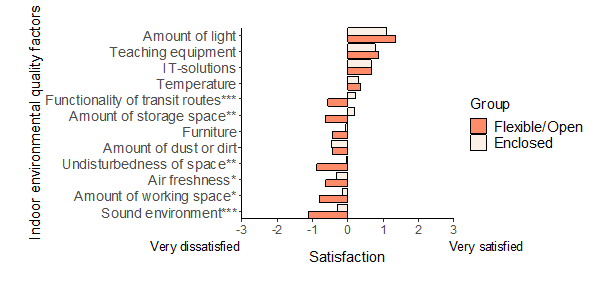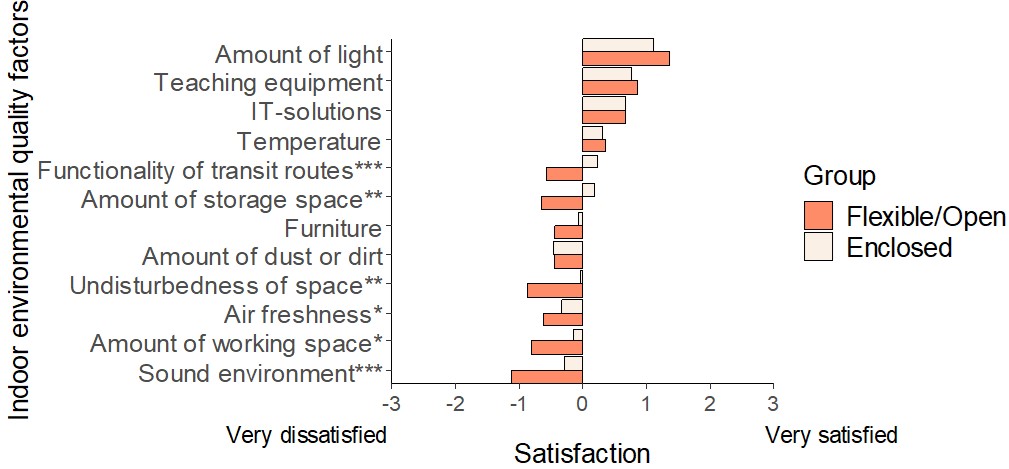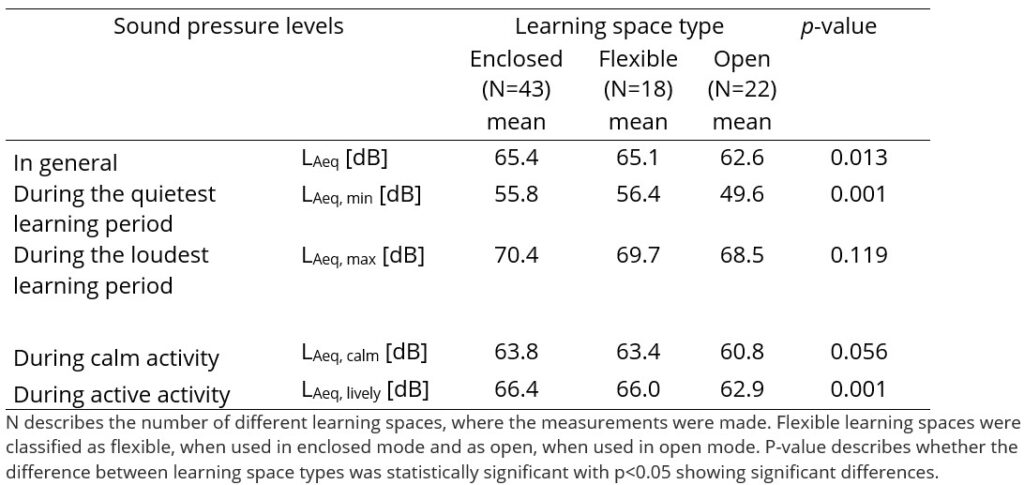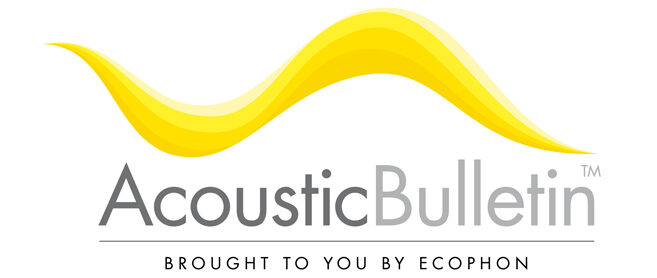
Study by Turku University of Applied Sciences
Study overview
A new study published in Building and Environment and recently presented at Forum Acousticum Euronoise 2025 in Malaga found that teaching staff were dissatisfied with open and flexible learning spaces, even though the sound levels during activities were slightly lower in open than in traditional enclosed learning spaces. Teaching staff were more dissatisfied with the sound environment, the functionality of access routes, the amount of space, and the absence of disturbances in open and flexible than in enclosed learning spaces. One reason behind this might be that in open learning spaces, the room acoustics often do not meet the Finnish room acoustic guidelines. Fully open learning environments should be built in schools with consideration and special attention should be paid to their acoustic solutions and planning their overall use.
Why this matters
Modern schools have different types of learning spaces. New flexible and open learning spaces are thought to offer possibilities for a larger variety of activities. Open learning spaces offer the possibility to teach several groups or one large group simultaneously in one space. Flexible environments can be converted into open learning spaces or into separate spaces to several smaller groups. Enclosed learning spaces offer a space for one group. Examples of learning space types are presented in Figure 1.
Types of spaces assessed
- a) enclosed learning space
- b) flexible learning space
- c) open learning space

Figure 1. (above) Examples of learning space types: a) enclosed learning space, b) flexible learning space, and c) open learning space.
Open and flexible learning spaces are thought to support student-centered learning while enclosed learning spaces support teacher-centered learning. However, at the same time open learning spaces are criticised for noise and disturbances that cause dissatisfaction.
This study examined the learning space types from three different viewpoints:
- teaching staff’s experiences
- room acoustic properties
- activity sound exposure
How this study was done
The study included the examination of 21 comprehensive schools in Southern Finland. The teaching staff’s experience was studied through surveys. In these schools, 361 teaching staff members responded. The school premises were examined with guided visits to schools, and interviews with the principals. In addition, the room acoustics properties and activity sound levels were measured in four spaces in 20 study schools. The activity sound levels were measured for five working days, when the teachers wrote down the time of teaching, the number of people in the learning space, as well as the type of activity.
Key findings
- Almost one third of teaching staff working in open or flexible learning spaces perceived that the space does not support the pedagogical methods they wanted to use while this was 15 % of teaching staff working in enclosed learning spaces.
- Teaching staff working in enclosed learning spaces were also more satisfied with their learning space in general than those working in open or flexible learning spaces.
- Dissatisfaction in the open or flexible learning spaces were related to sound environment, disturbances, amount of space, and functionality of transit routes (Figure 2).
- Only 9% of the open learning spaces in this study met the Finnish room acoustic guidelines regarding Speech Transmission Index (STI) (Table 1). STI describes the intelligibility of speech. In open learning spaces, STI should be high close to the speaker and low far from the speaker, which means that speech should be heard clearly close, but not far.
- The activity sound levels, however, were slightly lower in open than in enclosed learning spaces (Table 2).

Figure 2. (above) The satisfaction with indoor environmental quality factors of teaching staff working in enclosed and flexible or open learning spaces.
Table 1. The room acoustic measures from enclosed and open learning spaces.

Table 2. The mean activity sound pressure levels in learning space types.

Conclusions
- The problems in open learning spaces are not related to higher sound levels during activity, but rather to the disturbances coming from other school activity like from adjacent groups or transit routes. These aim the attention away from teaching and learning and disturb the intended activities.
- Open or flexible learning spaces do not necessarily offer a larger range of action possibilities than enclosed learning spaces.
- The slightly lower activity sound levels in open learning spaces might be related to the openness of space or difference in behavior.
- More focus should be paid to the room acoustic solutions in open learning spaces.
- More focus should be on planning learning spaces without extra disturbances.
Keys to good learning environments
- Special focus should be put on reducing distractions in schools via architectural, acoustic, as well as behavioral solutions.
- Special focus should be paid to the room acoustics of open learning spaces.
- Schools should be designed to have separated clear transit routes that do not cross learning spaces.
- Open learning spaces should be designed with the possibility of splitting the group into separate or flexible enclosed learning spaces.
- School schedules should be planned so that neighboring groups do not disturb others.
- Groups working in the same space should be able to coordinate their activities so that the space would have simultaneously only one type of activity.
The authors:
Jenni Raduna, Jukka Keränena, Sanna Rantanenb, Marjaana Veermansb, Valtteri Hongistoa
a Built Environment Research Group (BERG), Turku University of Applied Sciences, Joukahaisenkatu 3, Turku 20520, Finland
b Department of Teacher Education, University of Turku, Assistentinkatu 5, Turku 20500, Finland
Funders:
The study was funded by the Finnish Work Environment Fund, Saint-Gobain Finland Ltd/Ecophon, University of Turku and Turku University of Applied Sciences.
Articles on the project available here:
Radun, J., Keränen, J., Rantanen, S., Veermans, M., & Hongisto, V. (2025). Comparison of open, flexible, and enclosed learning spaces – teaching staff’s experiences and activity sound exposure. Building and Environment, 280, 113125. (Open access link here).
Keränen, J., Ahonen, K., Hongisto, V., & Radun, J. (2024). Room acoustic survey of open and enclosed learning spaces in Finland. Proceedings of Inter-Noise 2024, 25–29.
Radun, J., Veermans, M., Rantanen, S., & Hongisto, V. (2025). Teachers’ indoor environmental satisfaction and sound exposure in enclosed and flexible learning spaces. Proceedings of Forum Acusticum Euronoise 2025.
Radun, J., Keränen, J., & Rantanen, S. (2024, December). Joustavien ja suljettujen oppimistilojen vertailu opetushenkilökunnan näkökulmasta: kokemus, äänialtistus ja huoneakustiikka – Ääniope-projektin loppuraportti. Turun Ammattikorkeakoulun Raportteja 306, 1–26. (Link here).

